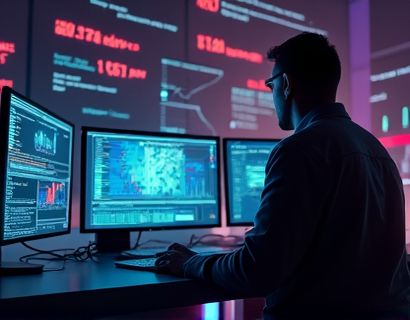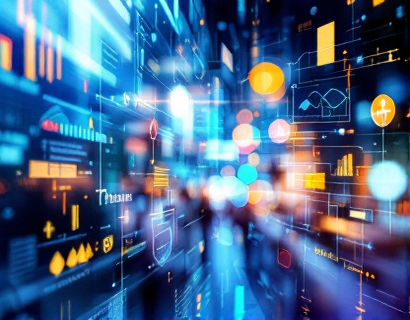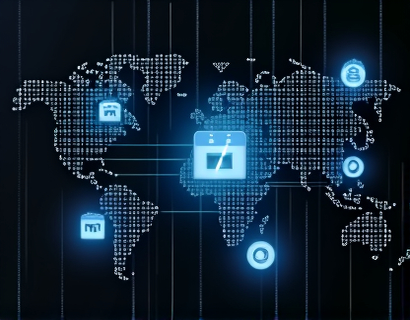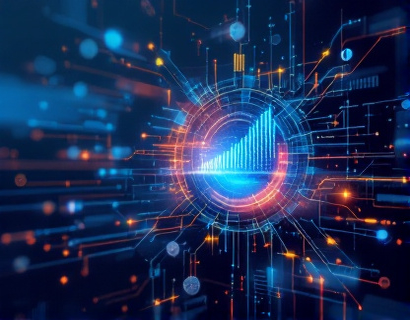Blockchain-Powered Asset Tokenization: Bridging Physical Assets with Digital Liquidity
In the evolving landscape of finance and asset management, the integration of blockchain technology stands out as a transformative force. One of the most promising applications of blockchain is asset tokenization, a process that bridges the gap between physical assets and the digital world. This innovative approach not only enhances liquidity and market accessibility but also revolutionizes the way assets are managed and traded. By leveraging the immutable and transparent nature of blockchain, asset tokenization offers a secure and efficient solution for asset holders and investors alike.
Understanding Asset Tokenization
Asset tokenization involves converting real-world assets into digital tokens on a blockchain network. These tokens represent a fraction or the entirety of the underlying asset, such as real estate, art, machinery, or even intangible assets like intellectual property. The process begins with the identification and valuation of the asset, followed by the creation of a smart contract that defines the rules and parameters of the token. This smart contract is deployed on a blockchain, ensuring that all transactions and ownership changes are recorded transparently and immutably.
The primary advantage of asset tokenization is the conversion of illiquid assets into liquid assets. Traditional real estate, for instance, is often tied up in long-term investments with limited access to capital markets. Tokenization breaks this barrier by allowing fractional ownership, enabling multiple investors to purchase and trade shares of the asset. This democratizes access to high-value investments, making them more accessible to a broader range of investors.
Enhancing Market Accessibility
One of the most significant impacts of asset tokenization is the enhancement of market accessibility. By tokenizing assets, previously exclusive markets become open to a global audience. Investors from around the world can participate in the trading and ownership of these assets without the need for intermediaries such as brokers or banks. This direct access reduces transaction costs and speeds up the trading process, making the market more efficient and responsive.
Moreover, the transparency provided by blockchain technology builds trust among participants. Every transaction is recorded on a public ledger, visible to all stakeholders. This level of transparency reduces the risk of fraud and errors, as all parties can verify the authenticity and history of the asset. The immutability of blockchain ensures that once a transaction is recorded, it cannot be altered, providing a secure and reliable environment for asset trading.
Liquidity Improvement for Asset Holders
For asset holders, tokenization offers a pathway to improved liquidity. Traditional assets are often held for long periods due to their illiquid nature, limiting the ability of holders to access their investments when needed. Tokenization changes this dynamic by allowing asset holders to sell or trade their tokens on digital platforms, similar to stocks or cryptocurrencies. This liquidity is particularly beneficial for investors who require quick access to capital or wish to diversify their portfolios.
Fractional ownership through tokenization also allows asset holders to monetize a portion of their asset without selling the entire property. For example, a property owner can tokenize a percentage of their real estate and sell these tokens to multiple investors. This flexibility not only increases the asset's liquidity but also attracts more investors, potentially leading to higher returns for all parties involved.
Use Cases of Asset Tokenization
The applications of asset tokenization are diverse and span multiple industries. In real estate, tokenization can facilitate the creation of real estate investment trusts (REITs) that are more accessible and liquid. Investors can buy, sell, and trade shares of real estate properties without the need for physical possession or complex legal processes. This model can also apply to commercial properties, apartments, and even land, broadening the scope of investable assets.
In the art world, tokenization can democratize the ownership of rare and valuable artworks. High-end art pieces are often out of reach for many collectors due to their exorbitant prices. By tokenizing these artworks, collectors can purchase and trade fractions of the piece, making art more accessible and liquid. This approach can also help artists monetize their work more effectively, as their art can be divided and sold in smaller, more manageable units.
Another promising use case is in the realm of intellectual property. Creators can tokenize their patents, copyrights, and trademarks, allowing for fractional ownership and easier licensing agreements. This can streamline the process of monetizing intellectual property and foster greater collaboration and innovation.
Challenges and Considerations
Despite its numerous benefits, asset tokenization is not without challenges. One of the primary concerns is regulatory compliance. The legal framework surrounding asset tokenization is still evolving, and different jurisdictions have varying regulations. Asset tokenizers must navigate these complexities to ensure compliance and avoid legal pitfalls. Collaboration with legal experts and regulatory bodies is essential to create a stable and compliant tokenization ecosystem.
Technical challenges also pose significant hurdles. The scalability and interoperability of blockchain networks are critical for the widespread adoption of asset tokenization. Current blockchain technologies may struggle with high transaction volumes and slow processing times, which can impact the efficiency of tokenized assets. Continuous advancements in blockchain technology, such as layer 2 solutions and cross-chain interoperability, are necessary to address these issues.
Security is another paramount concern. While blockchain is inherently secure, the smart contracts that underpin asset tokens must be meticulously audited to prevent vulnerabilities. Any flaw in the smart contract code can lead to significant losses for investors. Therefore, rigorous testing and auditing processes are essential to ensure the integrity and security of tokenized assets.
Future Prospects
The future of asset tokenization looks promising, with ongoing developments in blockchain technology addressing current challenges. The rise of decentralized finance (DeFi) platforms and the integration of blockchain with traditional financial systems are paving the way for a more inclusive and efficient asset market. As more institutions recognize the potential of tokenization, we can expect increased adoption and innovation in this space.
Furthermore, the concept of tokenized assets can extend beyond traditional real-world assets to include digital assets themselves. For instance, digital content, such as music, videos, and virtual real estate in metaverses, can be tokenized, opening new avenues for creators and consumers. This expansion can lead to a more interconnected and dynamic digital economy.
In conclusion, blockchain-powered asset tokenization represents a significant leap forward in asset management. By bridging the gap between physical and digital worlds, tokenization enhances liquidity, market accessibility, and efficiency. While challenges remain, the potential benefits make it a compelling area of focus for investors, asset holders, and the broader financial community.










































